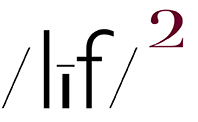(embiggenable) • iPhone
(embiggenable) • iPhone
(embiggenable) • iPhone
(embiggenable) • iPhone
(embiggenable) • iPhone
BEEN KINDA DISTRACTED, BLOG WISE OVER, the past 2 weeks or so. Making and buying stuff for Xmas gift giving, working at staying emotionally connected to a Covid Xmas, making pictures, Xmas day itself and, amongst other things, buying a new car.
Interesting thing about the car...inasmuch as I have been working on my seeing red body of work, we acquired a red (not just any old red but rather an extra-cost option crystal metalic soul red) car - the first non-black car we have owned in over 15 years. However, the choice of red was not due to my recent seeing red work. The choice was dictated by the idea that, if we were to buy a car made by this particular maker, the car color would have to be that maker's signature color.
In any event, lest I slide down a pool-table, shed-building, diet-story rabbit hole, what follows is a bit about photography...
At some point over the past couple weeks I came across a guy writing about a photograph and whether it might be, theoretically, a picture he would hang on his wall. One consideration was based upon the idea that the picture had a lot of depth. An idea that has always set off a clamor of wrong-answer buzzers in my head because...
surprise, surprise (to many)... A PHOTOGRAPHIC PRINT HAS NO DEPTH. QUITE TO THE CONTRARY, IT IS A FLAT AS A PANCAKE, PAPER THIN 2-DIMENSIONAL OBJECT.
Why does the idea of "depth" in a photographic print get me so riled up?, you might wonder. Consider this...
"Photographs that transcend but do not deny their literal situation appeal to me…..You know you are seeing such a photograph if you say to yourself, "I could have taken that picture. I've seen such a scene before, but never like that." It is the kind of photography that relies for its strengths not on special equipment or effects but on the intensity of the photographer's seeing. It is the kind of photography in which the raw materials-light, space, and shape-are arranged in a meaningful and even universal way that gives grace to ordinary objects." ~ Sam Abell
So here's the rub. Most "serious" amateur picture makers, especially those who claim to be making "fine art", have no concept of what the bold-highlighted sentence in the Abell quote means. As a concept, they are, most likely, unaware that such a concept exists. That is, other than the conventional so-called "rules of composition". Consequently, their "concept" of a good picture revolves around the idea that the depicted referent is "the thing" - an idea which drives then to pursue and picture referents which are culturally proscribed as beautiful referents in and of themselves.
To be fair, if that is what floats their boat, good for them. However, what really gets under my skin is their nearly absolute distain for pictures-pictures which excell in the "light, space, and shape" 2D arena-which depict quotidian / "everyday" referents. iMo, the reason for this distain is, quite simply, due to the fact that thay can not see such a picture for what it is - that is, again quite simply, a 2D object which displays "light, space, and shape arranged in a meaningful and even universal way that gives grace to ordinary objects."
Quite literally, they can not and do not see the arrangement of light, space and shape-most often independent of the the thing depicted-because they have been taught, one way or another, that "the thing" that a picture is about is the straight forward, literally depicted referent. Consequently, that is all they see.
To my way of thinking (and seeing), mores the pity for these lost in the dark picture making souls cuz the truly liberating thing about getting beyond the grasp of culturally proscribed beauty is the fact everything in the world is the raw material for the making of good pictures.
